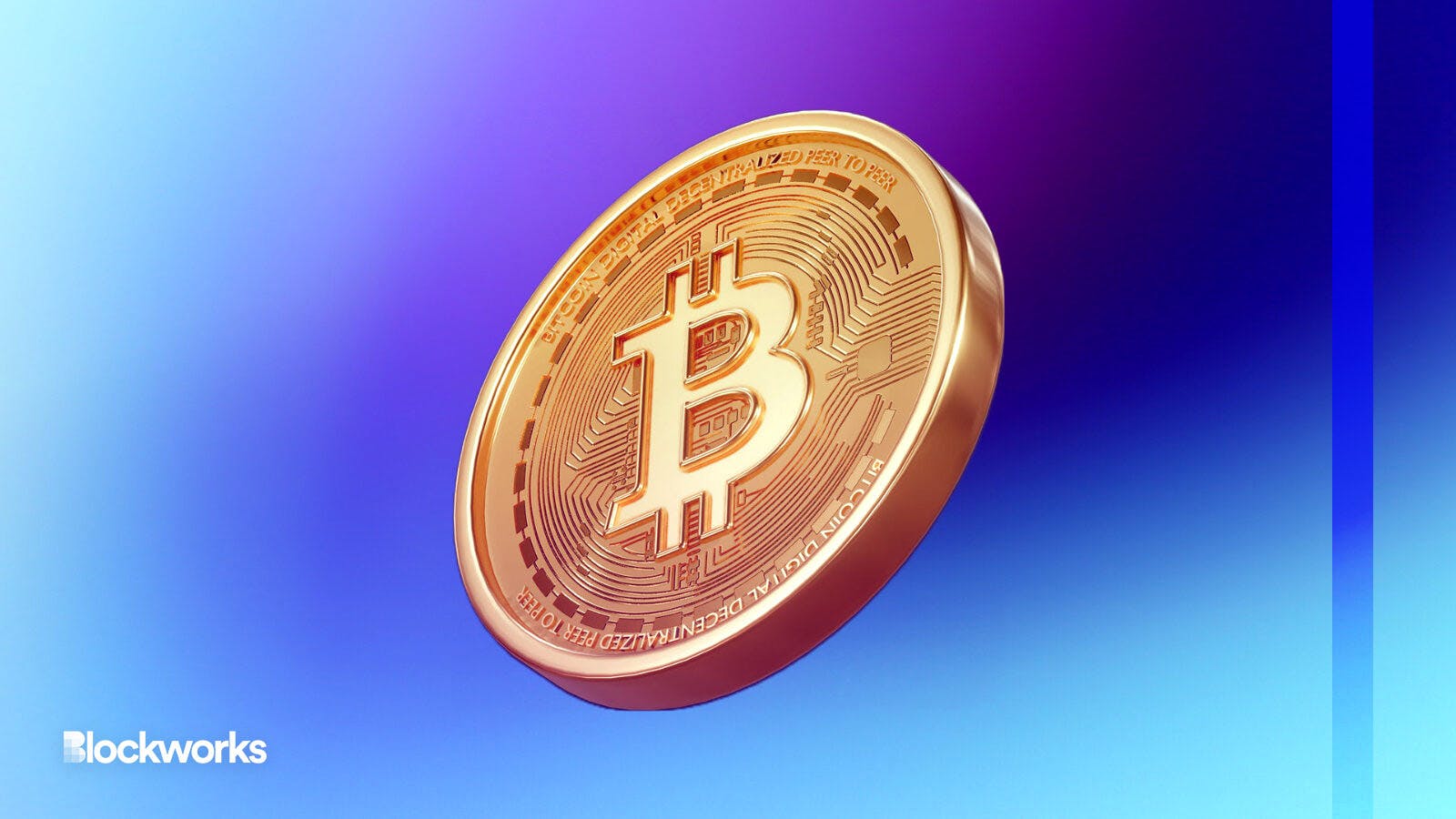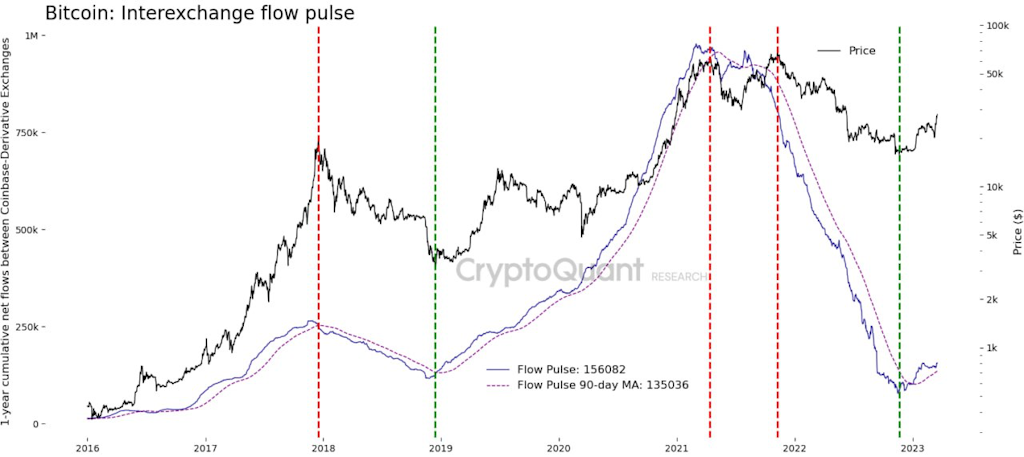Bitcoin Halving a Year Out: Here’s What To Expect
While the dollar value of mined BTC historically falls after each halving, it has always recovered thanks to post-halving fund flows

kitti Suwanekkasit/Shutterstock modified by Blockworks
As the next Bitcoin halving approaches, industry experts are closely examining the implications for price and hash rate over a long-term horizon.
The halving event, set to occur around mid-April 2024, is expected to have a significant impact on the crypto market, according to a report published Monday by research firm BitOoda.
The report suggests the key driver of bitcoin’s (BTC) price is the flow of funds into the ecosystem — currently amounting to about $25 million per day — to absorb the roughly 900 new BTC entering circulation through mining; blocks are mined, on average, every 10 minutes, minting 6.25 bitcoins each.
At the halving, the supply of new bitcoins received by miners — also known as the coinbase reward — is reduced by half. This happens all at once, from one bitcoin block to the next.
The report also notes sentiment can play a role in price discovery — where the investors see the bitcoin market going.
Looking at historical data, BitOoda said the six months following each of the prior halvings have seen an increase in price, with the most significant increase occurring after the first halving in 2012 when the price surged more than ten times its value.
In 2016, bitcoin’s price increased by 53% six months post-halving while the 2020 halving was preceded by a mostly flat price — excluding the exogenous shock of the March COVID-driven sell-off, 60 days prior to the event, BitOoda said. Bitcoin’s price then gained more than 70% over the following 180 days.
While the dollar value of mined BTC initially fell after each halving, the post-halving fund flows have always caused the price to recover throughout Bitcoin’s history, data by CryptoQuant shows.
The effect has become more muted over time, CryptoQuant told Blockworks, with the impact of each halving’s reduction in supply, diminishing relative to other factors.
“Adoption, institutional demand, easier access to bitcoin and macro factors become more important for bitcoin’s price growth,” Julio Moreno, CryptoQuant’s head of research, said.
 Price of bitcoin compared against the flows of capital to derivative exchanges | Source: CryptoQuant
Price of bitcoin compared against the flows of capital to derivative exchanges | Source: CryptoQuant
Moreno pointed out that when capital flows are growing — meaning demand to trade bitcoin is increasing — the asset appreciates and vice versa.
The Bitcoin price correlation to hash rate
The Bitcoin ecosystem is likely to continue experiencing significant growth in the coming years, with both price and hash rate expected to increase steadily leading up to the next halving event in 2024, the report notes.
Price moves tend to lead hash rate, with sustained hash rate growth typically driven by price appreciation, the firm said, although this is debated.
The Bitcoin network’s hash rate is a measure of the computing power dedicated to the network by miners worldwide. It represents the total number of hashes that can be performed by all miners in a given period and is measured in exahashes per second (EH/s).
Based on data from YCharts, the current bitcoin network hash rate is 320.42 EH/s — up about 51% from a year ago but down 8.6% on the day.
The increase in hash rate over the past year is likely due to the increasing number of miners joining the network, as well as the adoption of more powerful mining equipment.
This has resulted in greater competition for mining rewards and an increase in the network’s overall security.
The increasing number of bitcoin miners is a reflection of the improving market sentiment, as seen in the upward movement of spot prices for digital assets. This comes at a time when industry participants are re-evaluating a risk-on approach to protect wealth.
An analysis of hash rate scenarios shows a link to the estimated power price curve, suggesting the convergence of ASIC technology to leading-edge semiconductor processes will bring next-gen hardware to the market in late 2023, with volume shipments expected in 2024.
“As more powerful and efficient ASICs have been developed, hashrate has experienced an acceleration as miners enjoy a lower capital and operational cost per terahash deployed,” Moreno said. “The latest generation of ASICs are about 50% to 100% more powerful than the previous models.”
BitOoda estimates the theoretical “marginal maximum hashrates” could achieve 432 EH/s by the end of 2023 and 721 EH/s by the end of 2024, assuming power prices remain below $50 per megawatt hour.
Though the reality is likely to be closer to 400 EH/s by the end of 2023, reflecting a significant amount of older equipment still in use, the research firm said.
Longer term, the security of the Bitcoin network will depend more on transaction fees. Miners’ production costs will become less a function of their expectations of coinbase rewards, as Satoshi observed.
“In later years, when new coin generation is a small percentage of the existing supply, market price will dictate the cost of production more than the other way around,” Satoshi wrote in 2010.
Get the news in your inbox. Explore Blockworks newsletters:
- The Breakdown: Decoding crypto and the markets. Daily.
- 0xResearch: Alpha in your inbox. Think like an analyst.






